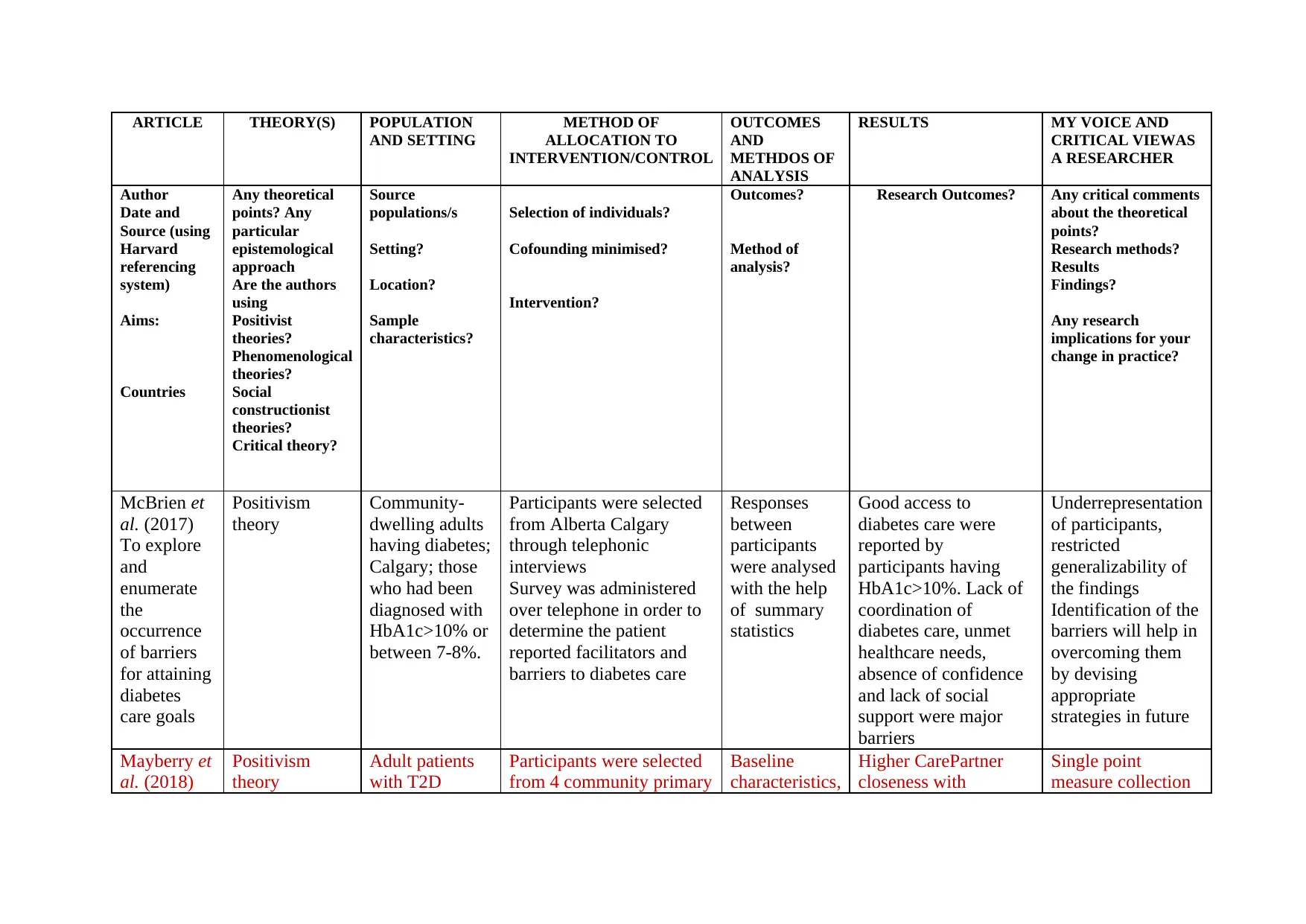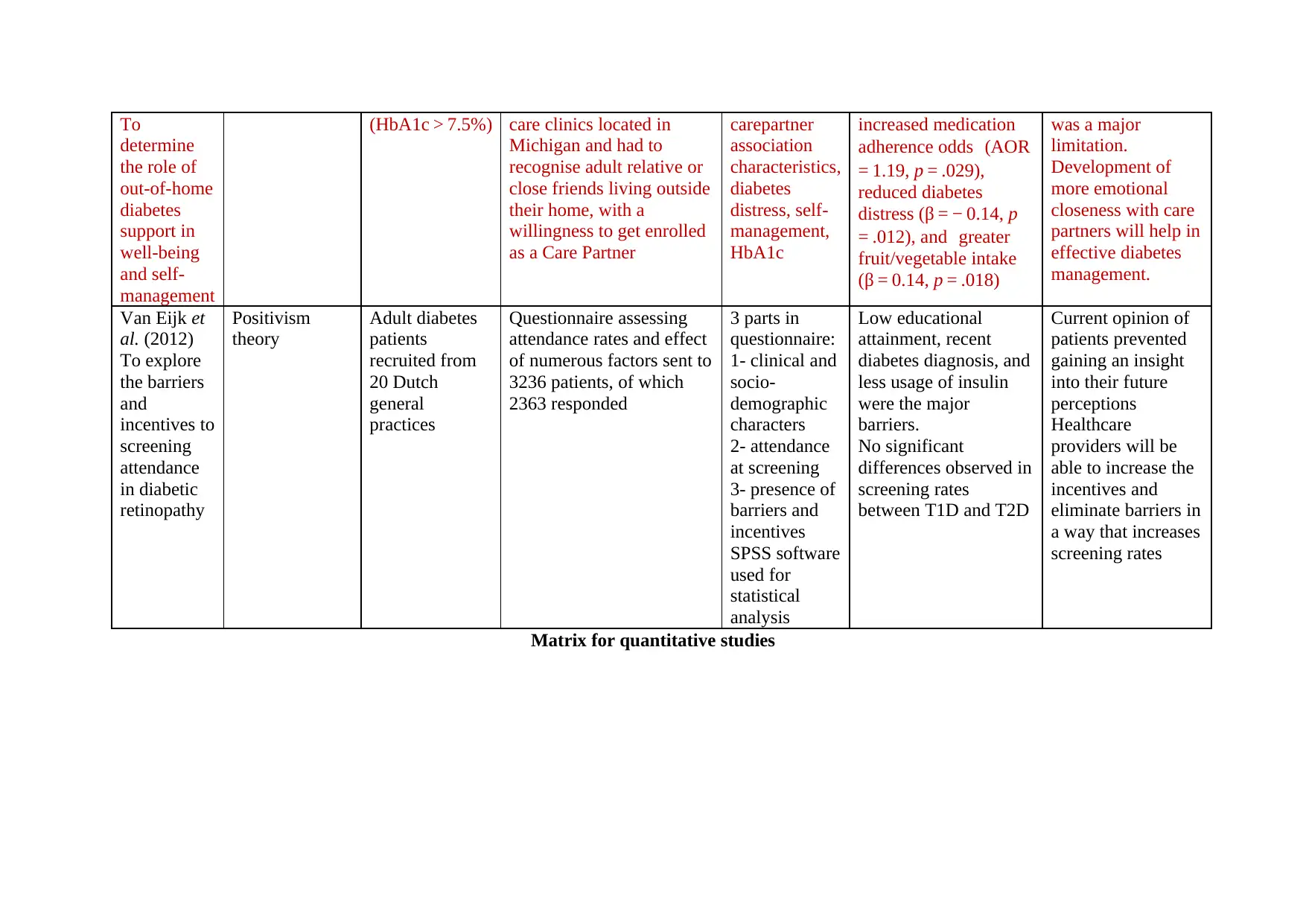Literature Review: Challenges in Diabetes Information & Care Access
VerifiedAdded on 2023/04/20
|2
|545
|460
Literature Review
AI Summary
This assignment is a literature review proposal focusing on the challenges individuals with diabetes face when accessing information and medical care in the UK. It includes a background of the topic, relevant theories and models, a clearly defined research question and aim, and specific objectives. The rationale for conducting the review is outlined, followed by a detailed methodology section describing the database search strategy, search terms, inclusion/exclusion criteria, and the final number of articles to be reviewed. The proposal also addresses the scope of future themes and ethical considerations. The review analyzes various articles, examining their theoretical underpinnings (positivism, phenomenology, social constructionism, and critical theory), methodologies, populations studied, and research outcomes related to diabetes care, self-management, and screening. The analysis also includes a critical perspective on the research methods and findings of the included studies, reflecting on the implications for future research and practice improvements. The assignment concludes with a personal reflection on the key learnings from the proposal development process.
1 out of 2


![[object Object]](/_next/static/media/star-bottom.7253800d.svg)